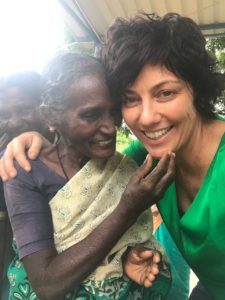Stretch targets, by nature, are designed to spur action. One hugely critical target, however, is at risk of passing by unmet. This target is the United Nations’ Sustainable Development Goal 8.7, a global goal which calls for effective measures to end forced labour, human trafficking and child labour by 2030. In short, what we call modern slavery.
There has never been more discussion about this critical human rights issue. It appears the stage is set to achieve SDG8.7, yet global progress is slow. If we don’t build meaningful momentum now, it’s hard to imagine that we will achieve it.
Slavery is known by many names—human trafficking, forced labour, debt servitude, forced marriage and exploitative child labour, among others. But in all cases, it is defined by the systematic removal of a person’s liberty, where one person is held by another against his or her will for personal or financial gain.
 In the Photo: Syrian refugees are vulnerable to situations of modern slavery in their host countries, including exploitative child labour and forced marriage. “We have heard in some camps children are getting to go to school, but there are no opportunities like that here. Sara (pictured) is 10, she picks vegetables in the fields when its season, and her brother works in a concrete factory. They work from morning until night, I have no way of knowing if they’re safe, but without them going out the younger ones don’t eat” – Mother, Beqaa Valley, Lebanon. Photo Credit: Grace Forrest
In the Photo: Syrian refugees are vulnerable to situations of modern slavery in their host countries, including exploitative child labour and forced marriage. “We have heard in some camps children are getting to go to school, but there are no opportunities like that here. Sara (pictured) is 10, she picks vegetables in the fields when its season, and her brother works in a concrete factory. They work from morning until night, I have no way of knowing if they’re safe, but without them going out the younger ones don’t eat” – Mother, Beqaa Valley, Lebanon. Photo Credit: Grace Forrest
There are more people living in modern slavery than at any other time in human history. Our research puts the global estimate at 40.3 million people. Of those, an estimated 25 million are trapped in forced labour and 15 million in forced marriage. Women and girls account for 71 per cent of all victims. One in four are children.
A crime that was “abolished” years ago is thriving. Why?
A PERSONAL CRIME
Last year, I visited Tamil Nadu in the south of India, a region that is known for its large textile industry with many spinning mills and garment factories.
The clothes made here find their way into major brand-name stores and shopping districts in the world’s largest economies. The final products present no suggestion of oppression or suffering, but they contain dark threads which can be traced back to Tamil Nadu and the predominantly female workforce there.
According to our partner The Freedom Fund, which works on the ground in Tamil Nadu, up to 80 percent of workers in southern India’s cotton spinning mills are female. Most are adolescent girls from low castes, who are often recruited to work under false pretences, void of basic employment rights. Many work more than 80 hours a week, in unimaginable conditions, for little or no pay and with no end in sight. While it is true that the industry plays an important role in providing local people with jobs, it is clear these jobs come in conjunction with significant risks.
 In the photo: Women recently liberated from intergenerational debt bondage in Varanasi, India. “There were no facilities at the (brick) kiln, so we used to go out to the field, and from there we were picked up. We were taken and locked in a small room, they removed all our clothes and all kinds of things happened. They demanded sexual favours whenever they felt like it … we were constantly afraid that they would come and pick us out and do what they pleased. Now, we finally have safety and security, not only for ourselves but for all our children” – Varanasi, India. Photo Credit: Grace Forrest
In the photo: Women recently liberated from intergenerational debt bondage in Varanasi, India. “There were no facilities at the (brick) kiln, so we used to go out to the field, and from there we were picked up. We were taken and locked in a small room, they removed all our clothes and all kinds of things happened. They demanded sexual favours whenever they felt like it … we were constantly afraid that they would come and pick us out and do what they pleased. Now, we finally have safety and security, not only for ourselves but for all our children” – Varanasi, India. Photo Credit: Grace Forrest
As I walked through a village in Tamil Nadu, two women in particular touched my heart. They were a grandmother, Amrita, and her granddaughter Aditi. They both worked in the same factory, paying off a debt which was passed down their family for generations. This debt came from a small bill incurred years earlier for a visit to the local hospital for what we in the western world would call a minor medical issue. Having lacked the money to pay this bill, the family was forced to work of the debt by unscrupulous labour recruiters who prey on this vulnerability in many of the local villages.
This story is just one example of how modern slavery exists as a dark by-product of globalisation. As well as being influenced by global issues such as inequality, poverty, conflict, migration and corruption, modern slavery—hidden deep within multinational supply chains—is fuelled by the growing demand for cheap consumer goods and services.
It is this pervasive and insidious nature of slavery that obscures it from view and makes us all unwitting enablers.
Related Articles
![]() SDG 8: CREATING DECENT WORK AND SUSTAINABLE ECONOMIC DEVELOPMENT by Kate Warrington
SDG 8: CREATING DECENT WORK AND SUSTAINABLE ECONOMIC DEVELOPMENT by Kate Warrington
![]() SDGS AT THE CORE OF THE EU: AN EMBRYO OR A NEWBORN? by Juan Luis Muñoz Arbona
SDGS AT THE CORE OF THE EU: AN EMBRYO OR A NEWBORN? by Juan Luis Muñoz Arbona
![]() FIGHTING MODERN SLAVERY. INTERVIEW WITH ELISE GROULX by Pierre Le Lay
FIGHTING MODERN SLAVERY. INTERVIEW WITH ELISE GROULX by Pierre Le Lay
Still, though, there is hope. Organisations like the Walk Free Foundation continuously strive to end modern slavery in our generation by measuring the issue, influencing powerful decision makers, partnering with networks and providing the tools needed to drive change.
An example of such a tool is a program funded by Walk Free and delivered by The Freedom Fund, which helps a group of girls, of which Aditi is a member, obtain an education that would give them a voice. Full of hope, energy and ambition, these girls are learning about their worker rights and basic financial information.
A great deal of what we do is not seen by the everyday person; developing research, for instance, and educating politicians and senior business and faith leaders. But as the chief executive of Walk Free, I consider the most important part of our work to be converting of our research and recommendations into action.
ACTION FRONTS
In 2017, Walk Free released the Global Estimates of Modern Slavery, in partnership with UN Organisations International Labour Organization (ILO) and International Organization for Migration (IOM). This unprecedented collaboration, which produced the measure of more than 40 million people in slavery globally, is providing information essential to policy making and to the implementation of UN Sustainable Development Goal 8.7. It is the baseline from which we are all working.
In July of this year, Walk Free launched the fourth edition of the Global Slavery Index, which provides the only estimate of modern slavery on a country-by-country basis. For the first time in this edition, the GSI also provides valuable data on where the products of this crime are sold and consumed, drawing developed countries into sharp focus.
Our analysis identified the top five product groups at risk of modern slavery—electronics, garments, fish, cocoa and sugarcane. Businesses and governments in G20 countries are collectively importing more than $US354 billion worth of these at-risk products every year, further reinforcing the fact that until this crime is better regulated, we are all enablers of slavery’s continuation and the cruelty against people like Amrita and Aditi.
In the Photo: The hands of a fishing boat worker in Thailand. The Thai fishing industry, where modern slavery is known to be a problem, supplies much of the world’s seafood. Many men working on fishing boats completely lose their finger prints due to the harsh conditions at sea. This is one of the many roadblocks in identifying and tracking those who might be vulnerable in this sector. Photo Credit: Grace Forrest
Both pieces of research are educating and motivating governments, and, thanks to a better understanding of the likely scale of slavery within their borders and supply chains, governments are indeed acting.
The UK led the way with its Modern Slavery Act in 2015. Other governments are following suit, including that of my home country, Australia, which plans to pass laws by the end of the year requiring large businesses to monitor, report and act on slavery in supply chains.
 In the Photo: Walk Free CEO Jenn Morris hosting the 2018 Global Slavery Index launch at the United Nations Headquarters in New York. Photo Credit: David Nicholas
In the Photo: Walk Free CEO Jenn Morris hosting the 2018 Global Slavery Index launch at the United Nations Headquarters in New York. Photo Credit: David Nicholas
Businesses are engaging too as a heightened social awareness of slavery begins to present opportunities, though not without challenges. Consumers are more vocal on the issue and investors are scrutinising social impact more closely. Businesses are responding and want a seat at the table with the government to ensure new laws enacted are conducive to good business.
Walk Free is helping to facilitate this through its role as the secretariat of the Bali Process Government and Business Forum, which brings senior business leaders and government officials together with the sole purpose of developing effective measures to end modern slavery. This year’s meeting–the second so far–has taken place in Bali, Indonesia, on the 6th and 7th of August. Also in August, we are bringing Latin American faith leaders together in Colombia with the same purpose.
TO FIGHT MODERN SLAVERY: URGENT MOMENTUM NEEDED
We know how many people are trapped in modern slavery. We know which countries slavery is most prevalent in and which countries are highly exposed to slavery through global trade. We have government, business and community leaders at a table and tens of organisations around the world working to eradicate slavery.
And yet, as a global community, we are falling behind on SDG8.7. Why? Because we aren’t collaborating effectively.
The indicators that will be used to measure our progress toward this goal still haven’t been agreed on, and it has been three years since we embarked on this mission. While the proposed indicator, the ratification and implementation of relevant ILO conventions, is a fundamental first step, it will not in itself be sufficient to combat modern slavery. Additional indicators need to capture enforcement if we are serious about making progress.
Beyond this, organisations continue to work in silos and often, the ultimate cause—freedom for tens of millions of people—is lost while we continue to debate definitions, scope and mandates. Once we agree on what the measures are, it will be critical to appoint an independent agency to assess the progress of every country and hold governments to account.
Every country is unique and demands a different response, but all must enforce laws against slavery. Business reporting on supply chains is one tool, laws against early and forced marriage is another.
In the Photo: Walk Free CEO Jenn Morris and garment factory worker Amrita in Tamil Nadu, India. Photo Credit: Jenn Morris
We must also address the drivers that allow slavery to flourish, through the other interrelated Sustainable Development Goals. Until we can better manage conflict, migration and gender inequality, we have a considerable challenge on our hands.
And lastly, we must all accept that slavery is our problem to remedy, and that we can do so.
If developing countries don’t act, they risk stunting their long-term growth prospects, as foreign investment brings greater scrutiny. If developed countries let slavery endure, it will continue to permeate their borders and supply chains and will threaten to erode the international rule of law that peace, stability and the global economy depend on.
The world’s “out of sight, out of mind” mentality has to change. No one is in favour of slavery, and while talking about it is a start, it is not enough. Real action is needed.
We must work together to end slavery, across borders and sectors. We are moving in the right direction, but we must collaborate better and act faster if we are going to meet SDG8.7 by 2030.


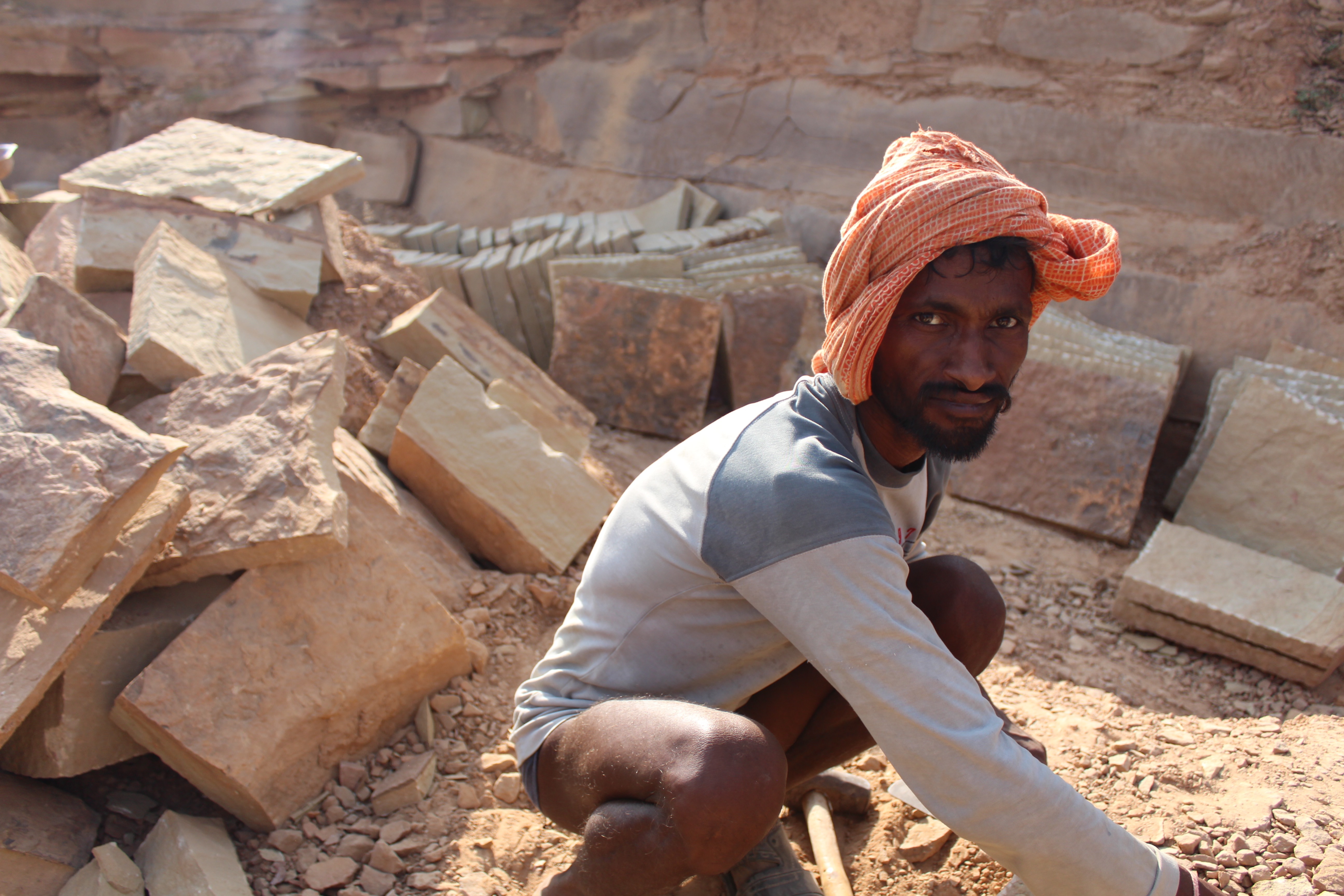
 In the Photo: Syrian refugees are vulnerable to situations of modern slavery in their host countries, including exploitative child labour and forced marriage. “We have heard in some camps children are getting to go to school, but there are no opportunities like that here. Sara (pictured) is 10, she picks vegetables in the fields when its season, and her brother works in a concrete factory. They work from morning until night, I have no way of knowing if they’re safe, but without them going out the younger ones don’t eat” – Mother, Beqaa Valley, Lebanon. Photo Credit: Grace Forrest
In the Photo: Syrian refugees are vulnerable to situations of modern slavery in their host countries, including exploitative child labour and forced marriage. “We have heard in some camps children are getting to go to school, but there are no opportunities like that here. Sara (pictured) is 10, she picks vegetables in the fields when its season, and her brother works in a concrete factory. They work from morning until night, I have no way of knowing if they’re safe, but without them going out the younger ones don’t eat” – Mother, Beqaa Valley, Lebanon. Photo Credit: Grace Forrest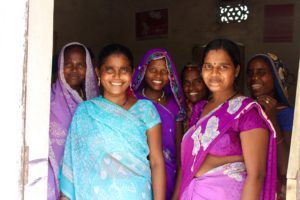 In the photo: Women recently liberated from intergenerational debt bondage in Varanasi, India. “There were no facilities at the (brick) kiln, so we used to go out to the field, and from there we were picked up. We were taken and locked in a small room, they removed all our clothes and all kinds of things happened. They demanded sexual favours whenever they felt like it … we were constantly afraid that they would come and pick us out and do what they pleased. Now, we finally have safety and security, not only for ourselves but for all our children” – Varanasi, India. Photo Credit: Grace Forrest
In the photo: Women recently liberated from intergenerational debt bondage in Varanasi, India. “There were no facilities at the (brick) kiln, so we used to go out to the field, and from there we were picked up. We were taken and locked in a small room, they removed all our clothes and all kinds of things happened. They demanded sexual favours whenever they felt like it … we were constantly afraid that they would come and pick us out and do what they pleased. Now, we finally have safety and security, not only for ourselves but for all our children” – Varanasi, India. Photo Credit: Grace Forrest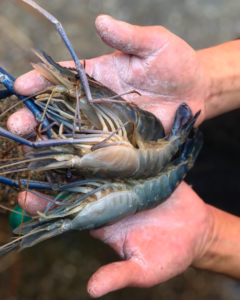
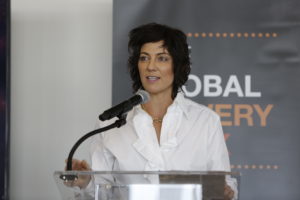 In the Photo: Walk Free CEO Jenn Morris hosting the 2018 Global Slavery Index launch at the United Nations Headquarters in New York. Photo Credit: David Nicholas
In the Photo: Walk Free CEO Jenn Morris hosting the 2018 Global Slavery Index launch at the United Nations Headquarters in New York. Photo Credit: David Nicholas